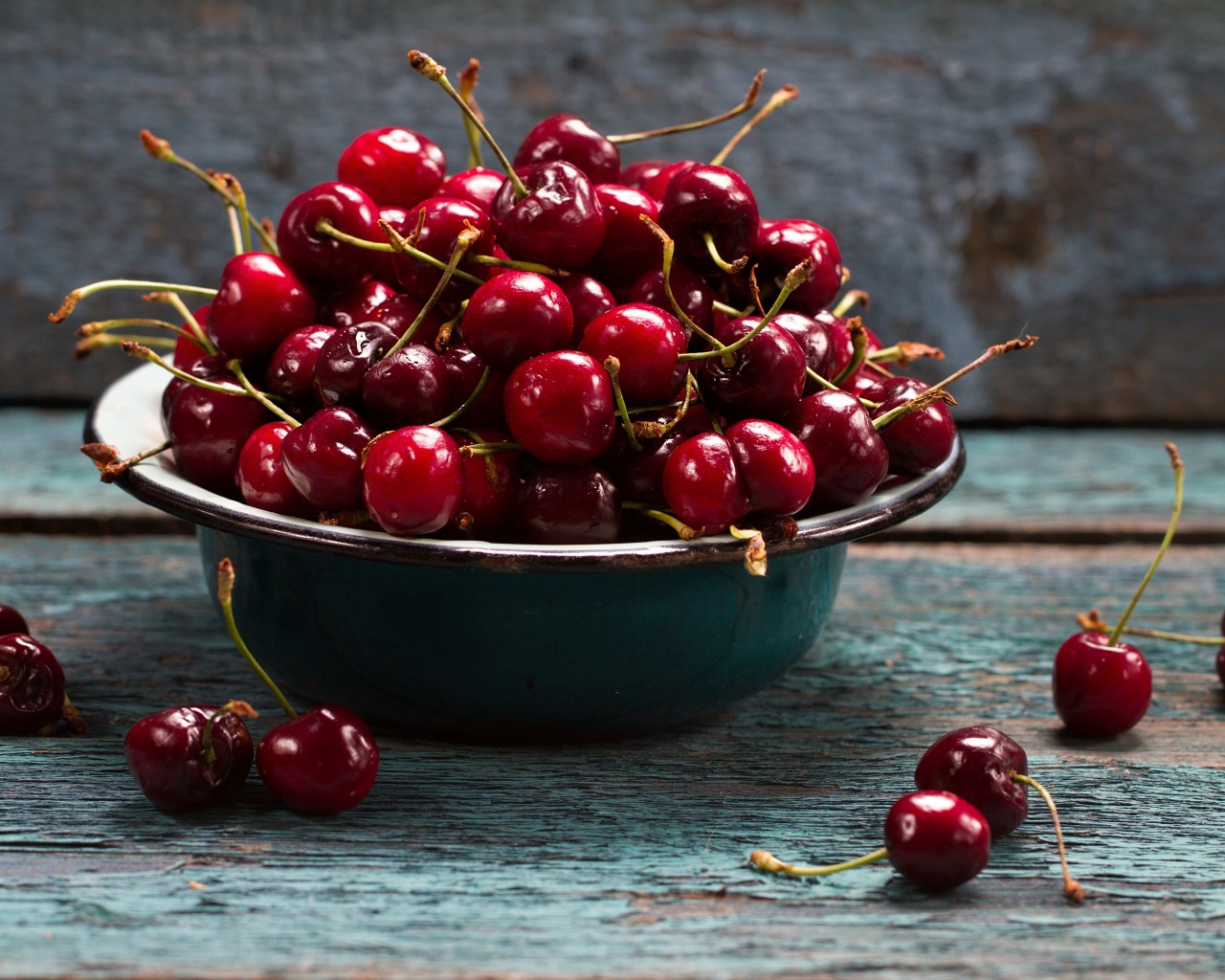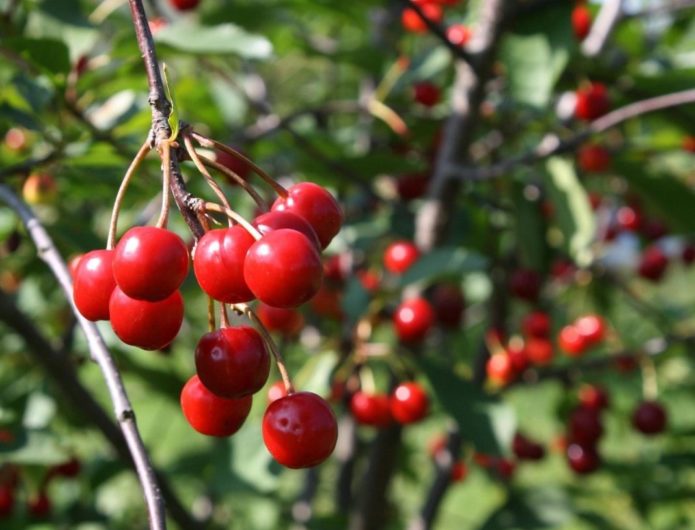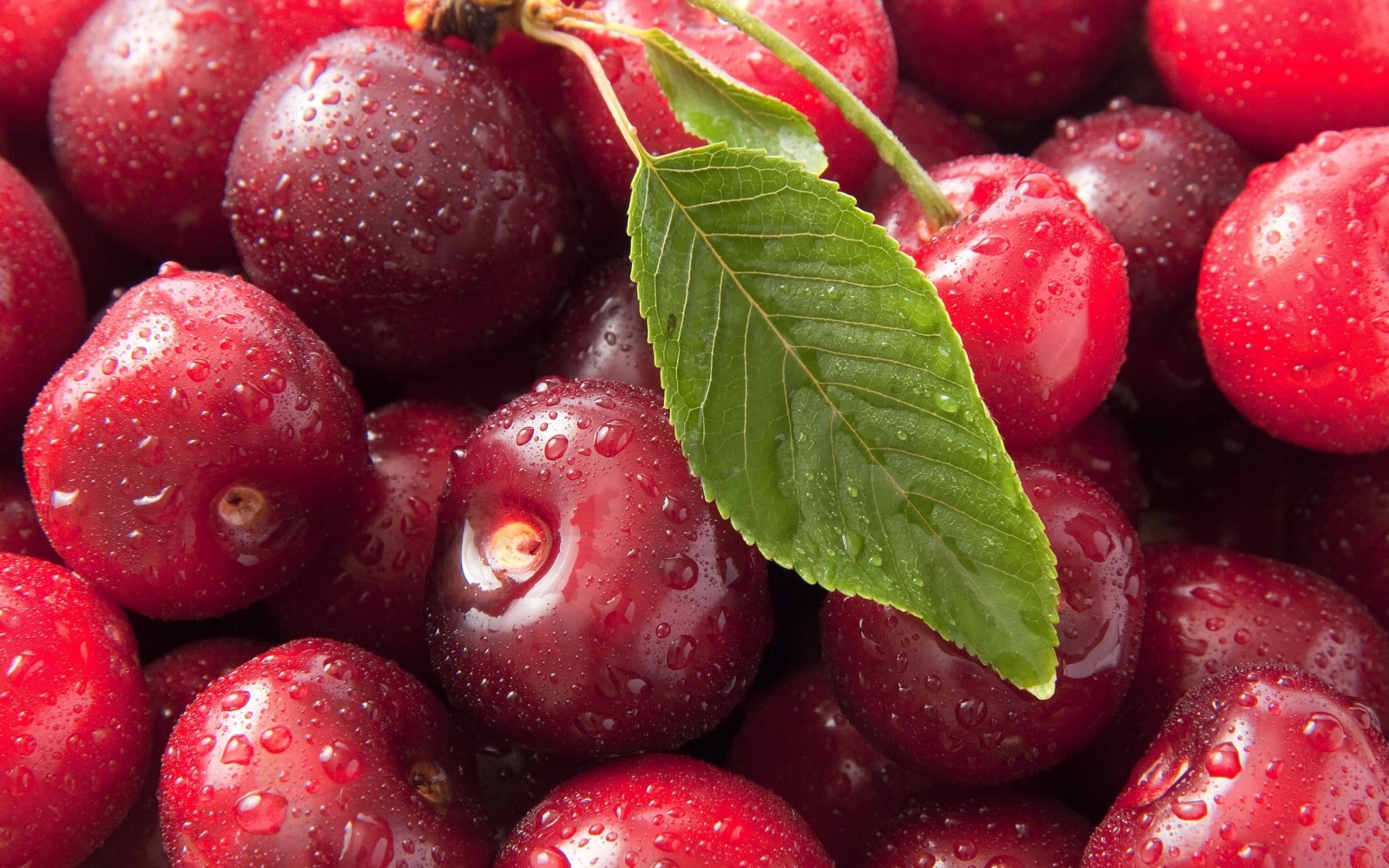Not a single garden tree can compare in the beauty of flowering with felt cherries, and its fruits are much sweeter and juicier than the species we are used to. But these are far from the only reasons why it is worth getting this tree on your site.

Tasty fruits
Cherries are in demand among gardeners because of their juicy and bright fruits, which are pleasant both fresh and in compotes, pies and other dishes. The sweet and slightly sour taste is popular with both adults and children. The cherry pulp contains about 8-10% sugar in the form of fructose and glucose, as well as malic and citric acid.
The hue of the fruit can range from pink and white to red and almost black. Their size reaches 1.5 cm in diameter and weighs up to 4.5 g. Depending on the region, berries ripen from early June to late July.
Beneficial features
The composition of the berries includes pectin, vitamin C, tannins, polysaccharides. Biologically active polyphenols, which strengthen the capillaries, are of particular benefit.
All these substances have a beneficial effect on blood composition, the functioning of the digestive system and the functioning of the heart muscle. Vitamin C provides good immunity support in all seasons.
Beautiful bloom
Many gardeners grow felt cherries exclusively for decorative purposes - these bushes are distinguished by abundant, lush and rather long flowering. White-pink buds reach 2.5 cm in diameter.
Oval leaves of dark green color are edged at the bottom. During spring flowering, young leaves are practically invisible due to the huge number of petals. The shrub grows to a height of 2.5–3 m.
Early fruiting
Berries appear in large quantities, usually in the second year. For better pollination, it is advised to plant several varieties of felt shrubs nearby.
Genetically, this species is very different from the common cherry and cannot interbreed with it. But cross-pollination is possible with plums, peaches, cherry plums, apricots.
High yield
With proper care, felt cherry will allow you to collect several tens of kg of berries from a couple of bushes during the fruiting period. To do this, it is worth planting a plant near a fence or wall of a building to provide it with protection from the wind.
Soil is also important. A sandy loam or loamy area with proper drainage is well suited for growing. The neutral acidity of such a soil will enhance the good fruiting of the shrub. To neutralize, once a season, you can treat the ground with a solution of lime.
Long fruiting
Fruiting of the felt cherry begins at the end of June and can last 2–3 months. With proper care, crops can be harvested annually for 15–20 years.
In central Russia, this is also possible, as in the south, because the plant is unpretentious and grows well in different climatic zones.
Not susceptible to coccomycosis
Felt cherry is resistant to coccomycosis - a quality that gardeners especially appreciate. This disease affects many stone fruit crops, which is why gardeners often lose their crops.
Pests attacking the common plum or cherry are completely indifferent to the felt variety.
Unpretentious tree
Short frosts, dry periods and bad weather will not do much harm to the plant. This allows you to enjoy the fruits of garden culture in the Urals and Siberia.
The absence of stagnant moisture in the area with cherries is also important for good growth of the shrub.
No root growth
The absence of root shoots, which so interfere with summer residents when caring for the site, makes the felt shrub convenient for a vegetable garden of any area.
The shoots do not interfere with the care of the soil, allowing you to effectively apply fertilizers under the bushes.


